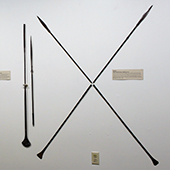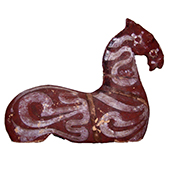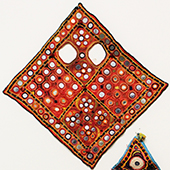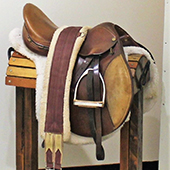Labor and Transportation

From pulling plows on the local farm to carrying goods over long journeys, the strong legs and muscular bodies of horses make them perfectly built to help humans pull and carry heavy loads. Historically, this was the most important function of horses in human societies, and still remains important in many parts of the world. Archaeologists have found ancient bridles that date back to 5,500 years ago, suggesting that horses were regularly ridden soon after being domesticated. Artistic depictions of horses pulling chariots in the Middle East date back to 4,000 years ago, showing the early use of horses for pulling vehicles.
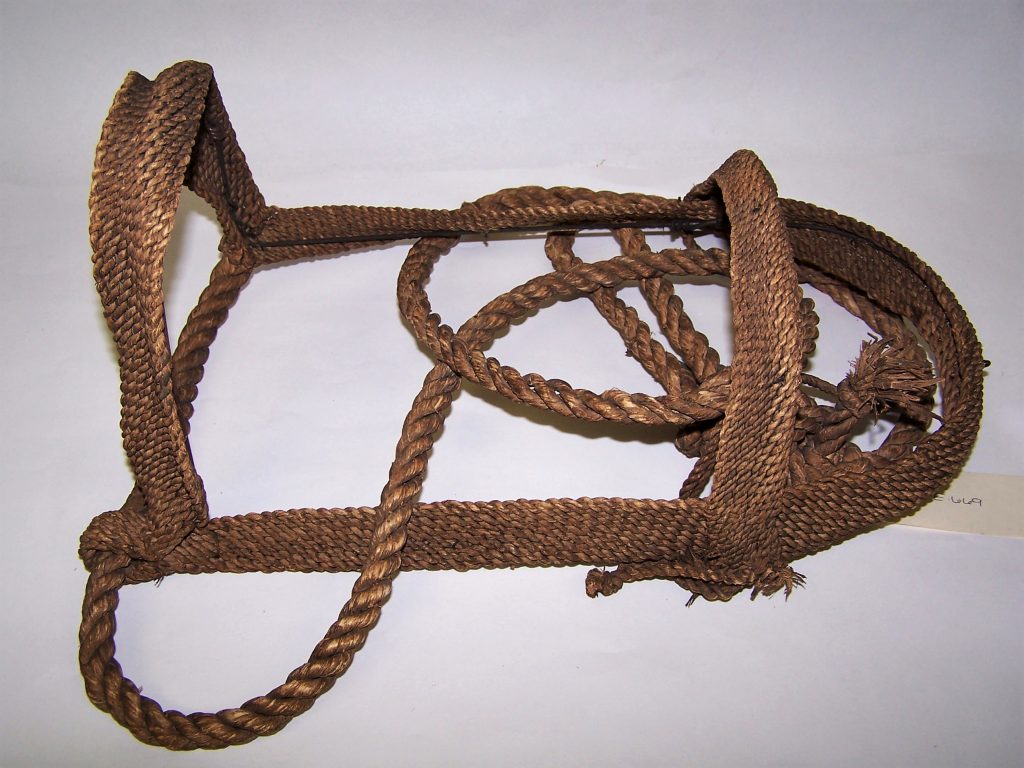
Bridle
Nicaragua, Late 19th Century, 1984.E.0669
The basic design of the bridle has not changed much throughout history. Bridles fit around a horse’s head and are used to direct the horse by pulling on the attached reins. This bridle is woven from tropical grasses native to Nicaragua. It is too small for an adult horse, but it could have been used to train a young horse, or perhaps a donkey or mule.
Saddle
China, Early 20th Century, 2011.04.E.90
This saddle is a mixture of Mongolian, Han Chinese, and Tibetan styles, giving it a unique appearance. The intricate metal grills hold together two wooden halves which straddle across the horse’s back. With this type of saddle, the rider would place one blanket underneath the saddle and one on top of the saddle seat.


Saddle
Mongolia, Early 20th Century, 2011.04.91
Mongolian horse riding techniques are very different from the Western or English methods common in the United States. For example, this saddle’s small seat is designed to perfectly match the short back of Mongolian horses. The pommel (front) and cantle (back) are raised, which stabilizes the rider during a fast gallop.
Explore the other sections of this exhibit below
